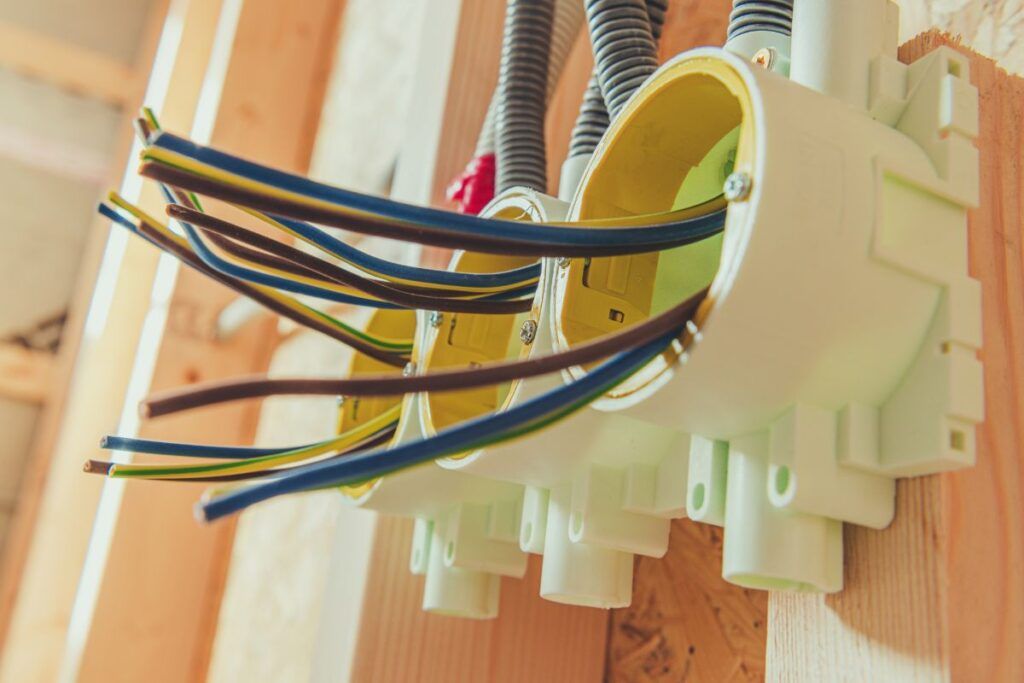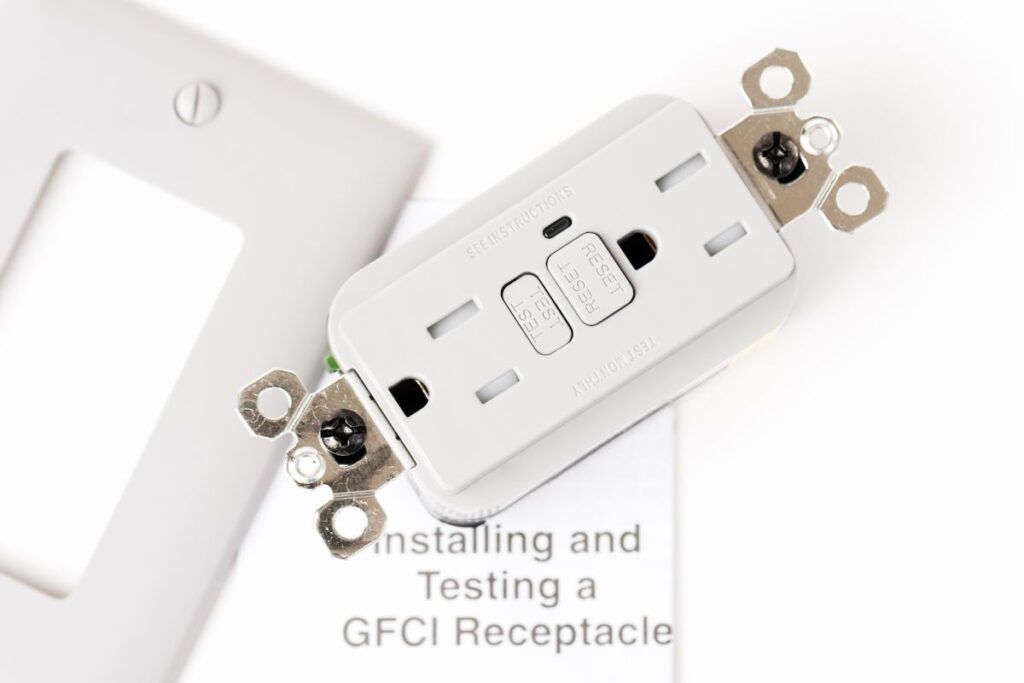Learning about the different electrical wires is confusing, and working with them is risky. If you do things wrong, you create health and fire risks. For example, you shouldn’t connect ground and neutral wires. Here, we will share the reasons behind it.
In general, connecting ground and neutral together is not recommended because it will make the ground wire live. If we do so, fire accidents and electrical shock are likely as all wires are live. However, you can connect them in the main panel, street drop, and meter.
This guide will help you know the results behind joining ground wires to neutral wires, vice versa, and both together.

Check out our list of top-handpicked products for all your electrical, appliance, and HVAC system needs to keep your home running smoothly.
This post includes some affiliate links.Understanding electrical wirings
Normal wiring is done with plastic-sheathed cables possessing 3 conductors.
Out of the three, two of them are covered with plastic insulation.
The third conductor is a bare copper wire.
You can differentiate them by their colors, white and black.
The black wire is the hot wire that gives a 120V AC current source.
The white wire is the neutral wire, allowing the hot wire’s current to return, thus completing the circuit.
The bare wire is the ground wire. It stays connected with the earth’s ground.

Hotwire or live wire
Hotwire is the main power feed attached to the circuit.
It carries the current from the main power source to the outlet.
Hotwire always carries current, which means they are very dangerous.
Neutral wire
The neutral wire is a part of the live wire.
Once the hot wire gets current, there must be another wire to complete the circuit.
The neutral wire plays the role.
The neutral wire carries the current back to the original power source.
This procedure circulates the current through the electrical system and gets utilized.
Neutral wires also prevent faulty and excessive currents from flowing to your outlet.
All the appliances need hot and neutral wires to operate.
The neutral is connected to the ground in the main panel and the final step-down transformer of the supply.
Neutral wires in the same grounded electrical system have the same potential because all are connected through the system ground.
Ground wire
The ground wire is a conductor that gives a low-impedance path to the ground and prevents dangerous voltages.
This wire is not much needed, but it is used for safety.
Normally, it does not carry any current.
But, if any short circuit occurs, the ground wire takes up the current, preventing electric shocks.
The ground wire connected to the neutral wire at the breaker box gives the current another route to flow.
If anything goes wrong, the ground wire will handle it by carrying the current and blowing the breaker instead of giving you any shock.
Can I connect ground to neutral or vice versa?
Connecting ground wire with neutral wire is quite risky.
When you connect the ground to the neutral, the former becomes hot or live. So, it increases the chances of electrical shocks.
The hot wire is a dangerous live wire; touching it exposed can shock you.
These hot or live wires are mostly black.
However, live wires also come in other colors like blue, yellow, or red.
The neutral wire is white, and the ground one is green.
Sometimes, people mistake connecting neutral to the ground wire without understanding the results.
In old houses, there were only neutral and live wires.
The grounding was introduced much later. It saves from shock as it is an alternate path for current flow if any short circuit occurs.
What happens if you connect ground to neutral?

As mentioned earlier, the ground wire doesn’t carry any current.
The metal case of any appliance is connected to the ground.
If the case gets energized due to any broken or loose wire, touching the case will give you a shock.
The ground wire prevents this shock.
The electricity changes the route and flows through the ground wire instead of going into your body.
But, since neutral wire carries current, connecting the ground wire to the neutral can make the ground wire live.
Instead of drawing the current away from the metal case, the ground wire will energize the case, and touching the case will complete the circuit, just like with the neutral wire.
If this happens, you or anyone touching the appliance will get an electrical shock.
Technically, you can connect the neutral wire to the ground in certain situations.
But, implementing such a thing is risky, especially in domestic settings, because most have single-phase currents.
However, the practice won’t cause any issues during industrial applications. They use three-phase currents.
Combined neutral and ground conductors are also used in electric supply companies, huge buildings for fixed wirings, and special applications with few alternatives like railways or trams.
Why is neutral wire connected to the ground?

In some circumstances, people connect the neutral wire to the ground due to some reasons:
It is done to change a 2-prong outlet into a 3-prong outlet.
A jumper wire connects the neutral wire to the ground one.
Generally, 3-prongs are a showoff.
Some people use them to fool the inspectors.
The process is called Bootlegged Ground.
People having old houses can use this technique and trick the electric checkers.
It helps in passing the inspection.
Even if you use it to trick the inspectors, practicing such risky things is not recommended, especially in household settings.
Despite having such risks, the practice is common in the service panels, where the wires are connected with a grounding electrode.
For such things, first, understand the difference between the main and sub-panels.
The main panel is directly connected to the buildings or houses at the entrance.
On the contrary, the subpanels give a proper methodology to install the outlets and organize the electrical system into something effortless.
All the subpanels are fed off the main panel.
The neutral and ground wires are never connected in the sub panels.
Neutral wires provide only a single return path for the current.
The main panel is easier to handle as they have the main breaker, especially the larger one where you can switch the power off.
That is why people can connect ground and neutral wires to the main panel.
Subpanels are downstream from the main panels and are powered with wires connected to the main panel.
Can we use the neutral wire as the ground wire?
The wires that carry currents are live and neutral wires.
The ground wires are not supposed to carry any current.
They are used for safety purposes to avoid short circuits and other accidents.
Using neutral wire as a ground wire will result in an electrocution threat.
If anything happens to the neutral wire, like loosening or disconnection, the ground wire gets activated as the neutral.
It will lead to energizing every other thing you plug in.
For example, suppose you connect a television or a computer with an outlet whose neutral is not working, or the ground wire got activated as a neutral wire.
In that case, you will be energizing the desktop or TV.
As a result, whenever you touch the appliances, you will get a shock.
Using a neutral wire as a ground wire is more dangerous than the other things explained above.
If you connect the neutral or hot wire in the wrong terminals, using the neutral wire as the ground will connect the hot wire to the outlet.
You will receive an even more dangerous shock.
Can I tie the ground and neutral wire together?
Tying the ground and neutral wire together is more dangerous than connecting one with another.
It will have the same result as in the connecting stages, and the risks are even greater.
But, to balance the ground’s absence, you should install a GFCI (Ground Fault Circuit Interrupter) instead of using any jumper wire or bootleg ground process.
The NEC (National Electric Code) has approved this method.
If your house doesn’t have ground wiring, install a GFCI. But, don’t connect any grounding terminal screws.
Warn people by placing a GFCI placard so that people stay safe.
You can also install grounding wires for more safety.
How to wire neutral and ground together?

Though the method is not recommended, a lot of people do it.
And for that, all they need is a jumper wire to connect the neutral and ground.
It is done in the 2-prong appliances for grounding.
But, as I have mentioned multiple times, it can be dangerous.
If you have a GFCI setting in your circuit, trying the Bootleg Ground here will prevent the setting from activating.
It won’t let the GFCI setting protect your home or the appliances from ground faults.
Though you can join the wires, it is better not to connect them, keeping the risks in mind.
If you must join them, do them in the main panel and not in the subpanels.
Final thoughts
I don’t recommend connecting the neutral and ground wires.
The ground wire’s purpose is to protect us from shocks. If it is joined with the neutral wire that holds a current, the ground turns live, and it won’t save us from any short circuits anymore.
However, ground and neutral are still connected to trick the inspectors through a process called Bootleg Ground. And to convert a 2-prong into a 3-prong outlet.
Electrical companies and big industries connect the two wires because they have a three-phase circuit. In domestic settings, single-phase circuits are used, which is why connecting the two is dangerous.
Install a GFCI instead of connecting these two wires. You may join them in the main panel, which has main breakers. Avoid joining the wires in the subpanels.
Reference: BASICS OF HOME ELECTRICAL WIRING, Ground and neutral wire Wikipedia.

